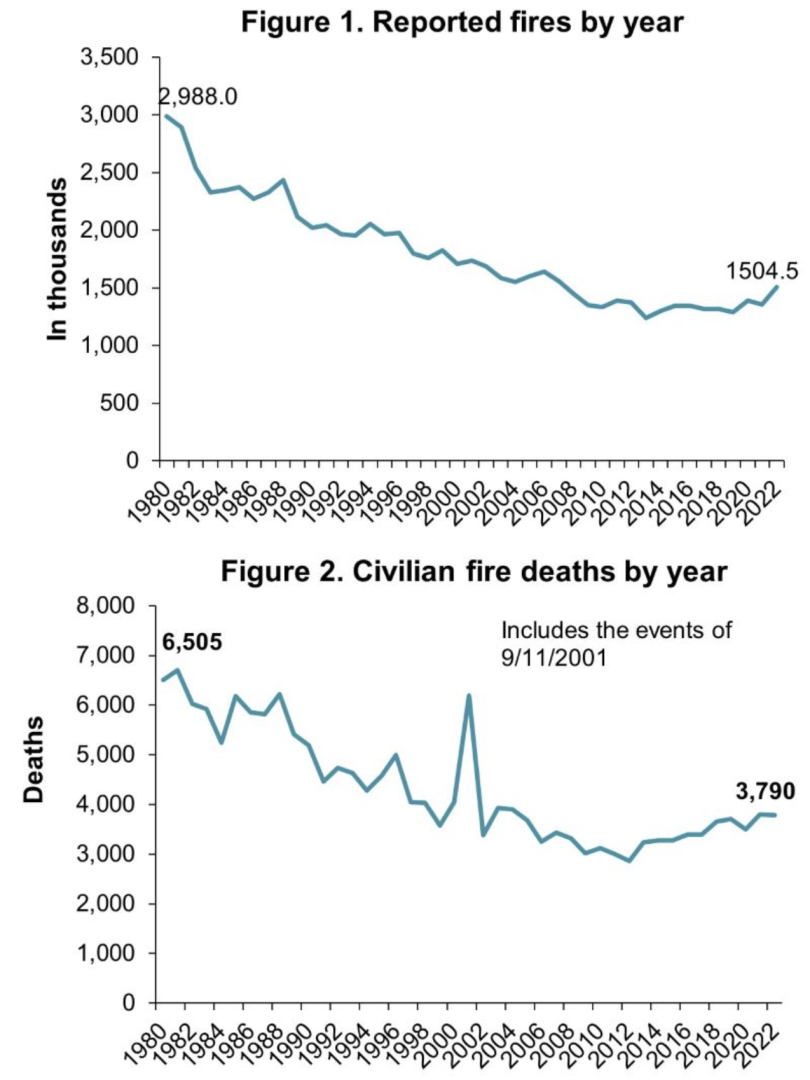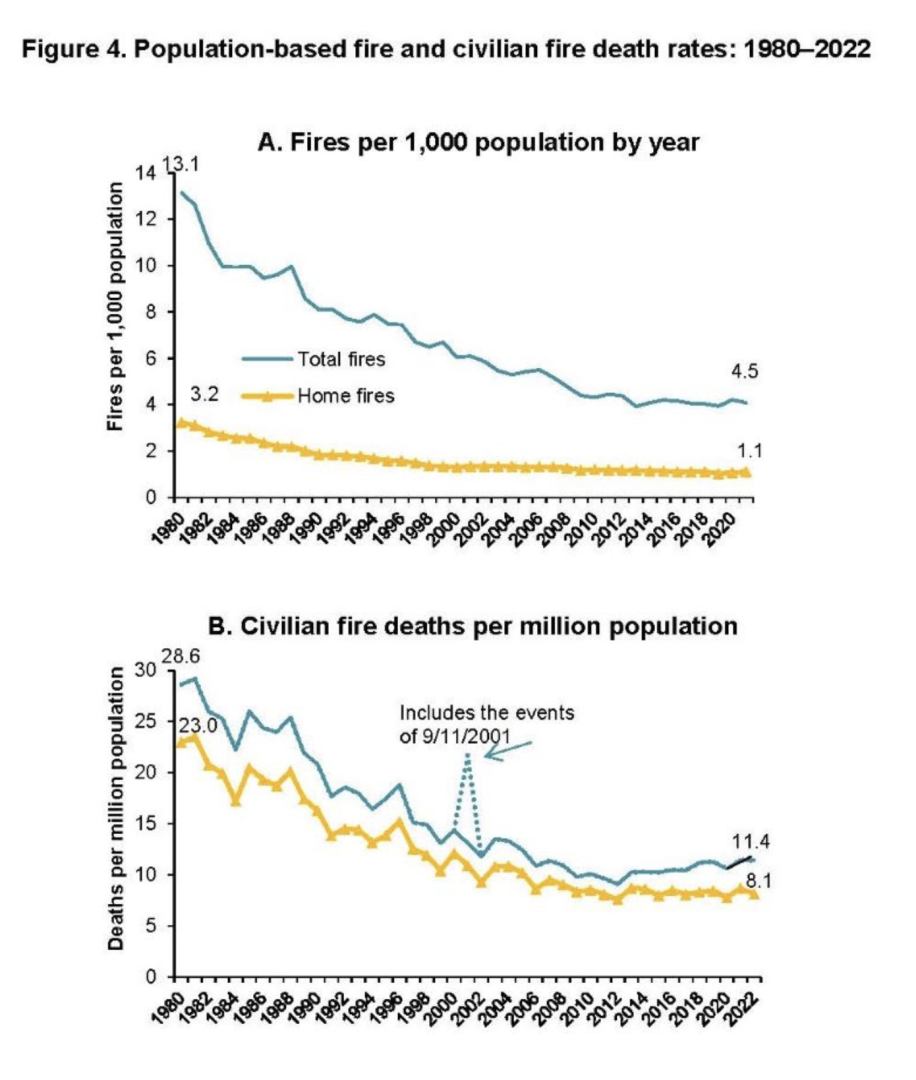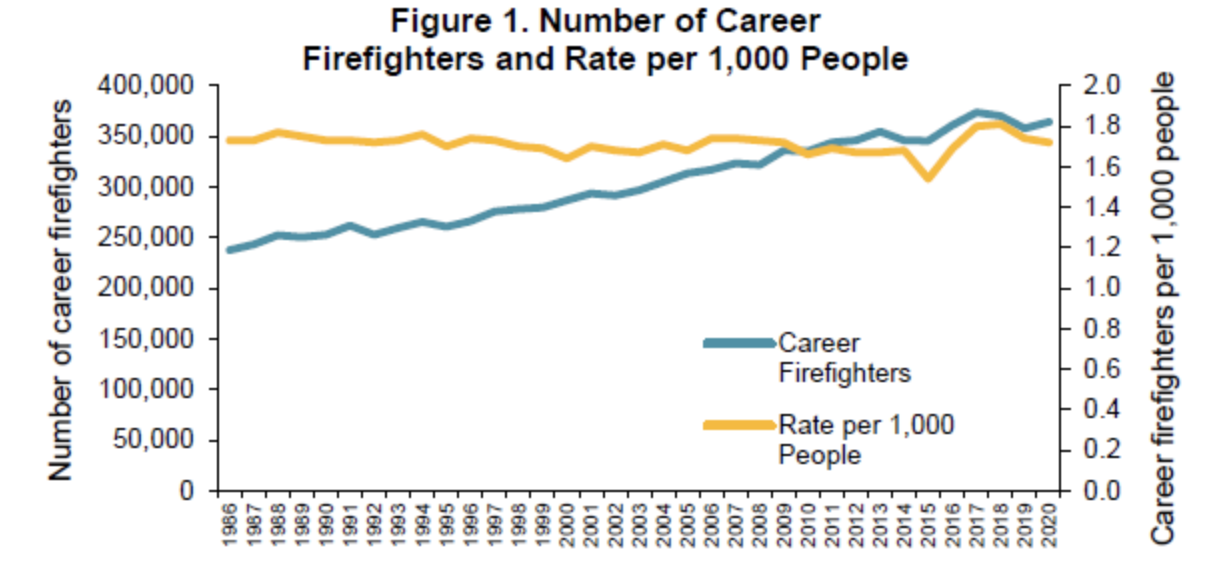Comments
- No comments found

Fires, whether natural or human-induced, can have devastating consequences on both the environment and communities.
Understanding key facts about fires is crucial for prevention, preparedness, and effective response.
I see a lot more fire engines than I do fires, but as an economist, I trust statistics more than my own two eyes. The National Fire Protection Association collects the relevant data. Shelby Hall authored the most recent version of “Fire Loss in the United States” (November 1, 2023). The author notes: “On average, a fire department responded to a fire somewhere in the US every 21 seconds in 2022. A civilian was fatally injured in a fire every two hours and 19 minutes. Every 40 minutes, a civilian suffered a non-fatal fire injury.”
However, the longer-term trend of fires (based on fires reported to local fire departments) has generally been downward–although with a definite upward bump in 2022. Here are some basics:


Despite the fall in fires over time, the number of firefighters has climbed along with the general rise in population, so that the rate of firefighters per 1,000 people has remained the same. This data is from a different report from the National Fire Protection Association by Rita Fahy, Ben Evarts and Gary P. Stein, called “US Fire Department Profile 2020” (September 2022).

With fires and fire deaths down by half since 1980, what are the firefighters doing? Many fire departments have for a long time included health-related events, not just fires, in their basic mission. But as the number of fire-related responses by fire departments has declined, the number of health-related responses has risen substantially. Here’s the data from Fahy, Everts, and Stein (the provide annual data, but here, I’m just comparing 1980 and 2020):

As you can see from the above figure, the number of career fire-fighters has expanded by about 50% over the last 40 years (from about 240,000 to 360,000). In that time, the number of fire department calls has more than tripled (from about 11 million to over 36 million). However, the number of calls related to fires has dropped by more than half, reflecting the decline in number of fires. Medical aid or rescue was already a more common fire department activity back in 1980, but it has expanded quite rapidly. Fire departments also end up involved in a number of other situations like downed power lines, disaster relief, or even bomb threats. What it means to “be a fire-fighter” has been evolving over time.
Timothy Taylor is an American economist. He is managing editor of the Journal of Economic Perspectives, a quarterly academic journal produced at Macalester College and published by the American Economic Association. Taylor received his Bachelor of Arts degree from Haverford College and a master's degree in economics from Stanford University. At Stanford, he was winner of the award for excellent teaching in a large class (more than 30 students) given by the Associated Students of Stanford University. At Minnesota, he was named a Distinguished Lecturer by the Department of Economics and voted Teacher of the Year by the master's degree students at the Hubert H. Humphrey Institute of Public Affairs. Taylor has been a guest speaker for groups of teachers of high school economics, visiting diplomats from eastern Europe, talk-radio shows, and community groups. From 1989 to 1997, Professor Taylor wrote an economics opinion column for the San Jose Mercury-News. He has published multiple lectures on economics through The Teaching Company. With Rudolph Penner and Isabel Sawhill, he is co-author of Updating America's Social Contract (2000), whose first chapter provided an early radical centrist perspective, "An Agenda for the Radical Middle". Taylor is also the author of The Instant Economist: Everything You Need to Know About How the Economy Works, published by the Penguin Group in 2012. The fourth edition of Taylor's Principles of Economics textbook was published by Textbook Media in 2017.
Leave your comments
Post comment as a guest